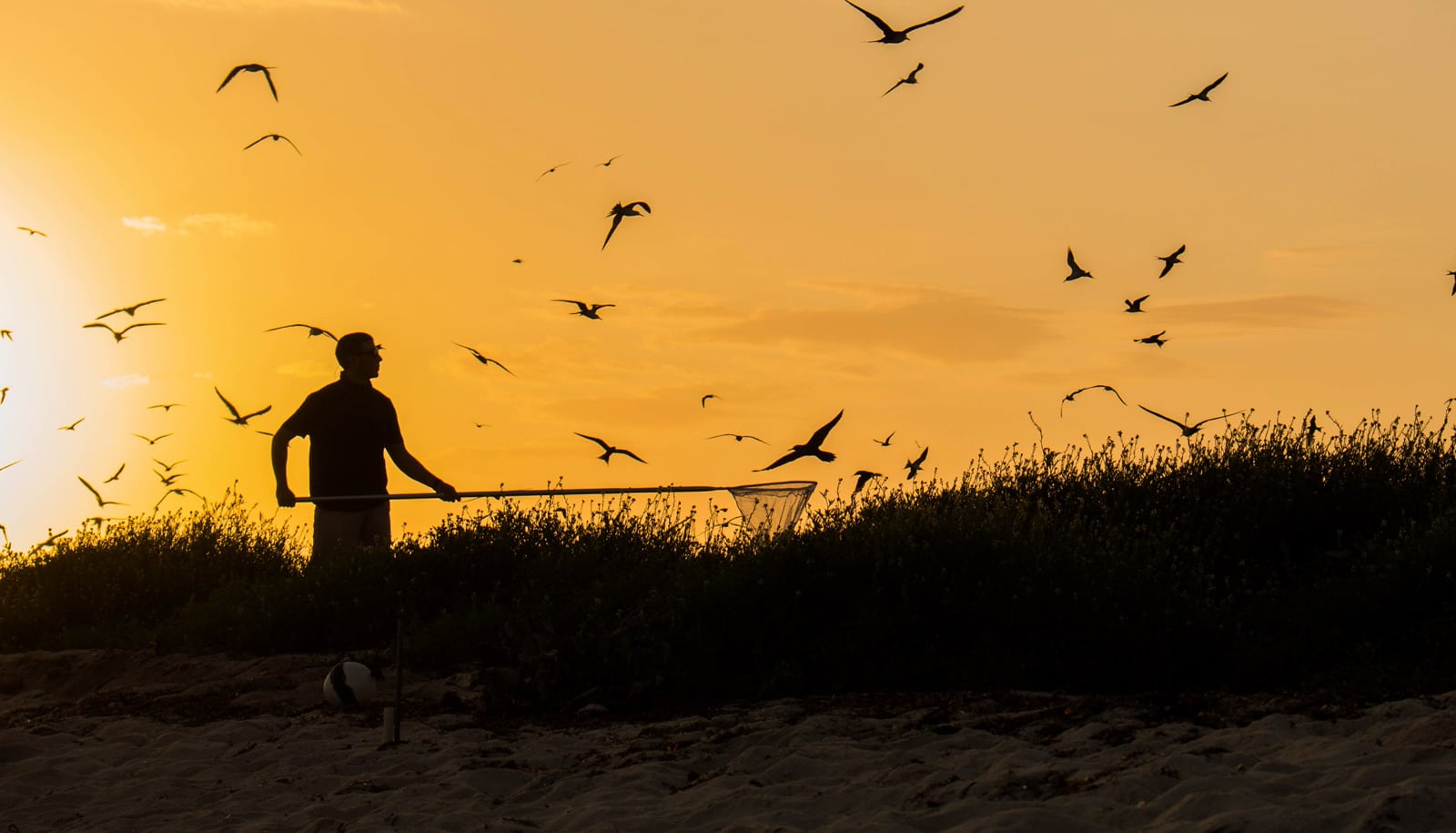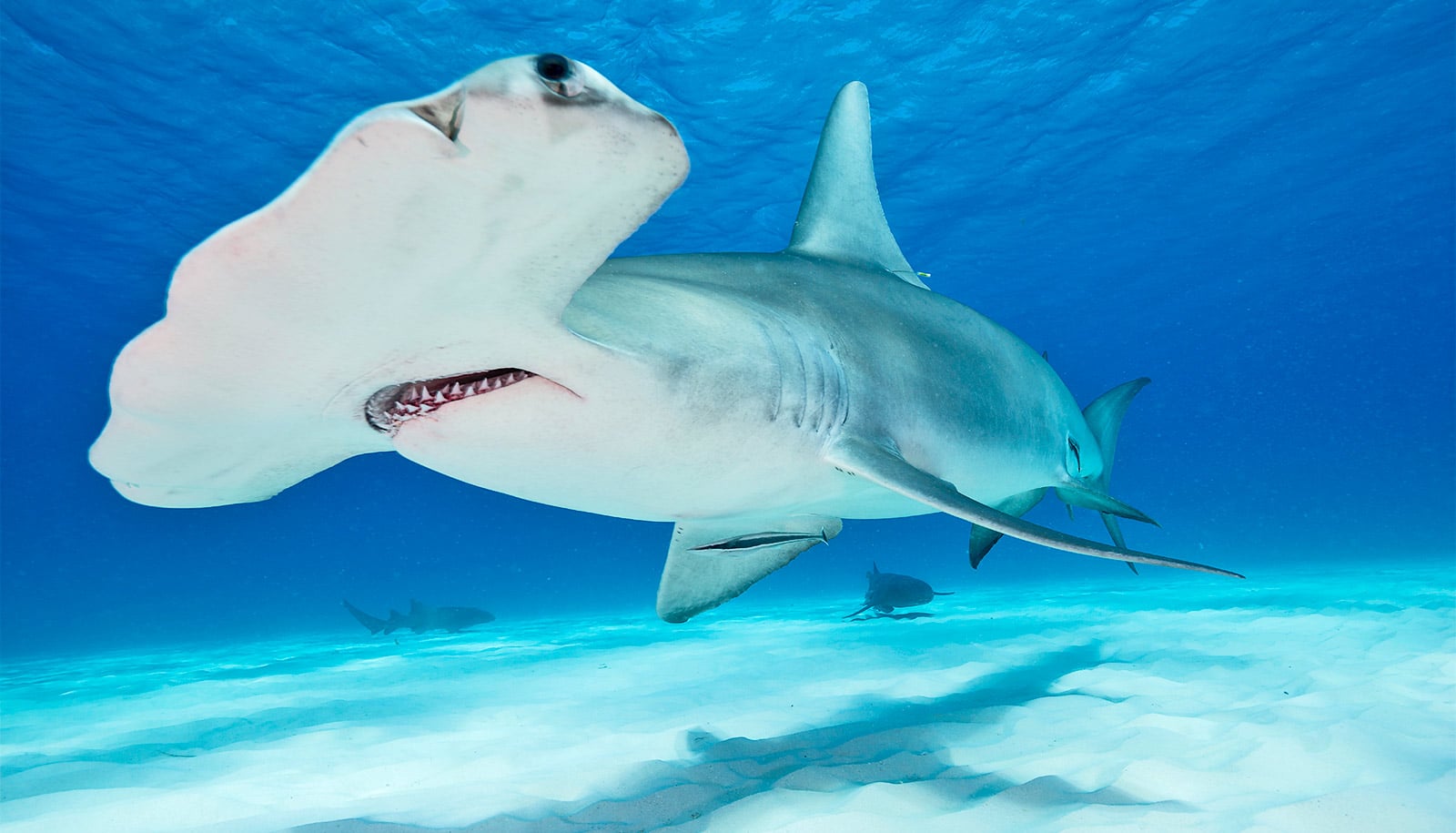Stronger and more frequent hurricanes may pose a new threat to the sooty tern, a migratory seabird found throughout the Caribbean and Mid-Atlantic.
This finding, published in the journal PeerJ, comes from the first study to map the birds’ annual migratory path and demonstrate how its timing and trajectory place them in the direct path of hurricanes moving into the Caribbean after forming over the Atlantic.
“The route the birds take and that most Atlantic-forming hurricanes take is basically the same, only in reverse,” says Ryan Huang, a doctoral student at Duke University’s Nicholas School of the Environment, who led the study. “That means these birds, who are usually very tired from traveling long distances over water without rest, are flying head-on into some of the strongest winds on the planet.”
“This is worrying because we know that as Earth’s climate changes, we expect to see more frequent and powerful hurricanes in the future—meaning that the chances of sooty terns being hit by storms will likely go up,” Huang says.
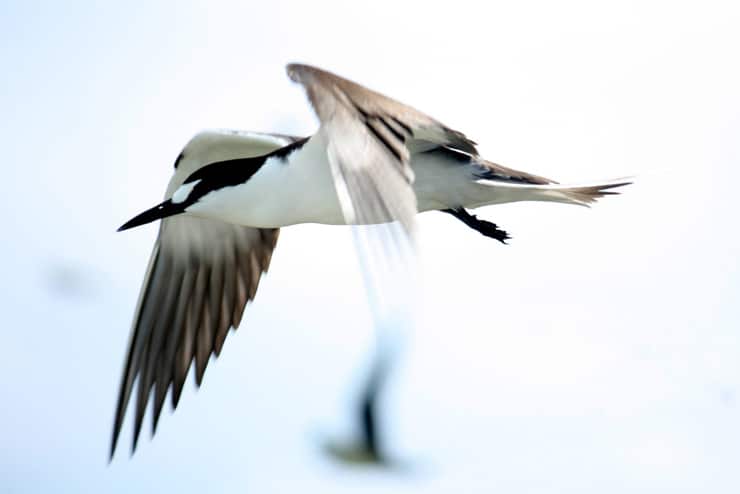
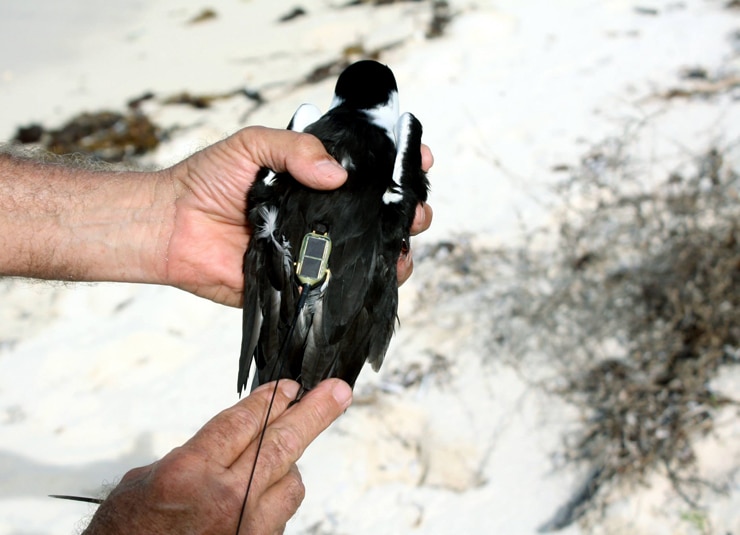
track its movements. (Credit: Ryan Huang/Duke)
Hurricane season typically lasts from June to November, with peak activity occurring in August and September.
A new map produced by the research shows that sooty terns leave their breeding colony at Dry Tortugas National Park in the Florida Keys each June as hurricane season starts. They migrate southward and eastward across the Caribbean through summer and early fall, before skirting the northern coast of South America and arriving at their winter habitat off the Atlantic coast of Brazil in November.
Huang and his colleagues charted the migratory path by recording and mapping the dates and locations of all sooty terns banded for study at the Dry Tortugas since the 1950s but found dead elsewhere. They also mapped locational data retrieved from birds that were fitted with satellite-telemetry tracking tags. When they overlaid all this data with maps of hurricane paths from the same period, they discovered a striking correlation.
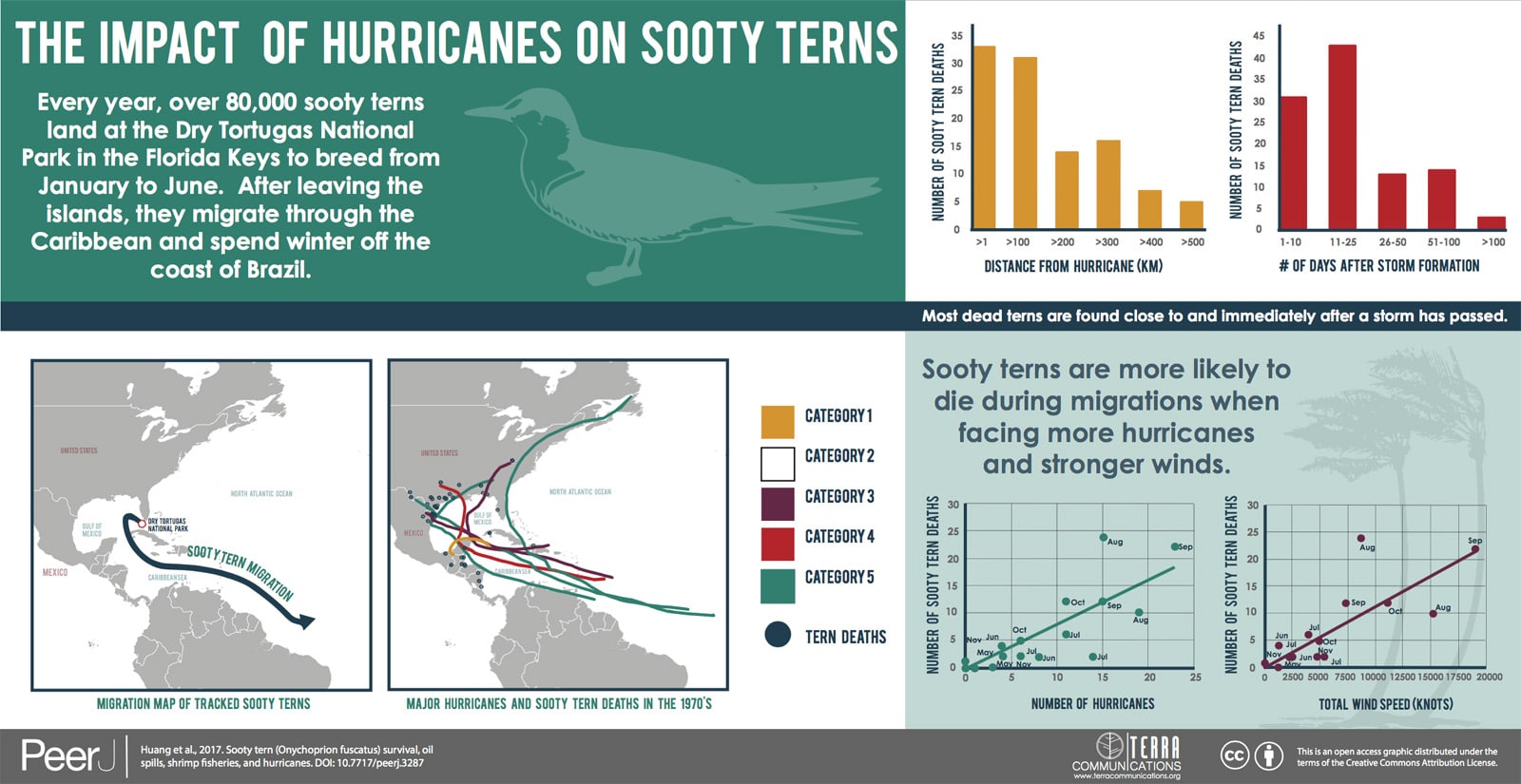
“While it’s impossible to say just how many of the birds died as a direct result of the hurricanes, we saw a strong relationship between the numbers and locations of bird deaths and the numbers and locations of hurricanes,” says Stuart L. Pimm, professor of conservation ecology at Duke’s Nicholas School.
“What’s really interesting is that it’s not just the big category 4 and 5 storms that can kill large numbers of birds. A series of smaller, weaker storms may have the same impact as that of a single large, strong storm,” Pimm notes. “In September 1973, Tropical Storm Delia, a small storm in the Gulf of Mexico, killed a lot of birds because they were in the wrong place at the wrong time.”
Migrating birds need these shrinking ‘rest stops’
Although sooty terns are neither rare nor endangered—an estimated 80,000 or more breed in the Dry Tortugas each year—they have long been an indicator species for scientists determining the health of the region’s marine environment.
“If there are changes taking place in the ocean, you’ll see corresponding changes taking place in the health of these tern populations, among other indicator species,” Huang says. “That’s what makes our findings somewhat concerning. If these birds are experiencing negative effects from changing ocean conditions, they are unlikely to be the only species affected.”
Oron L. Bass Jr. of the South Florida Natural Resources Center at Everglades National Park is a coauthor of the study.
Funding came from the National Park Service and the National Science Foundation Graduate Research Fellowship program.
Source: Duke University
